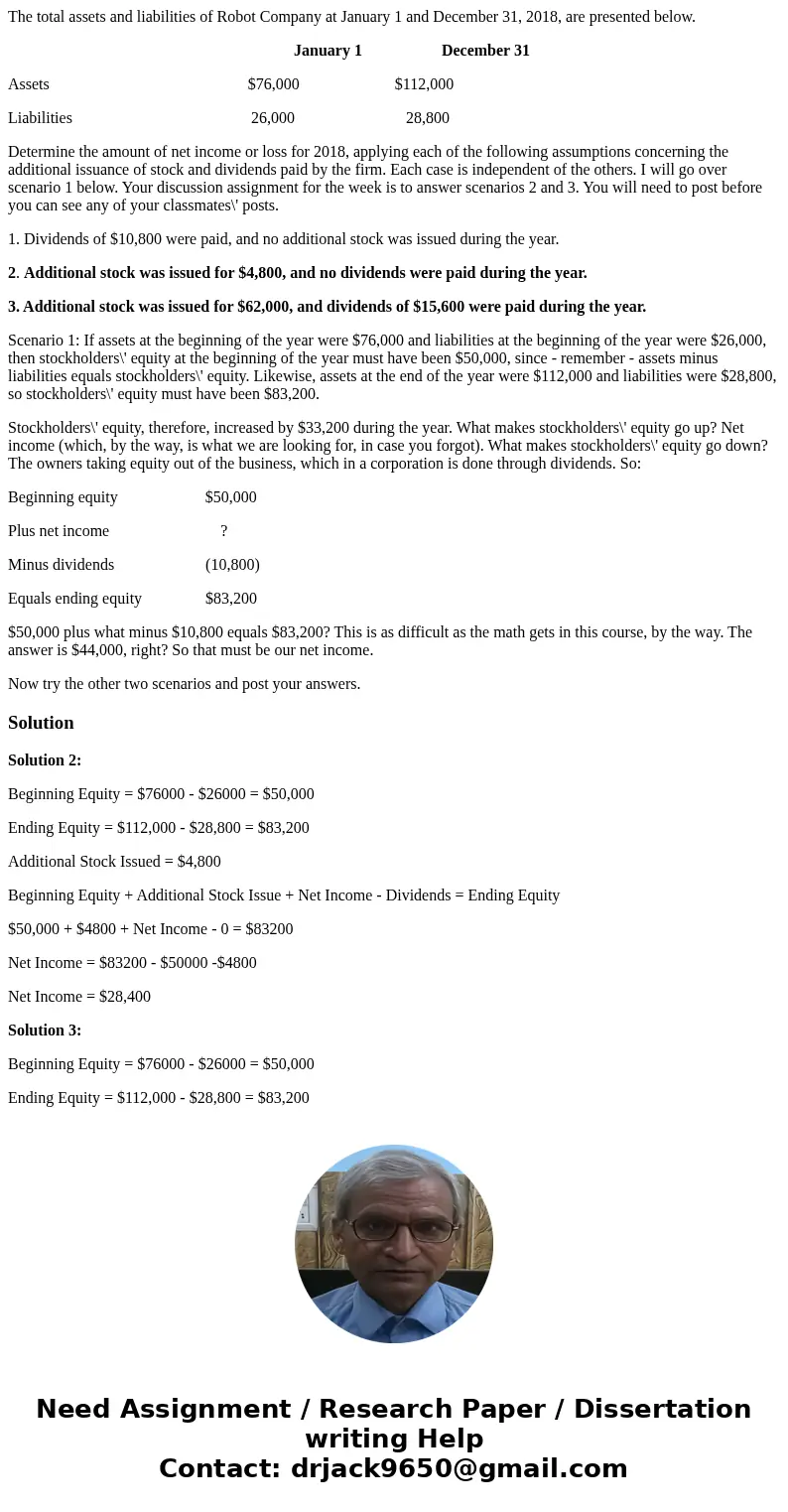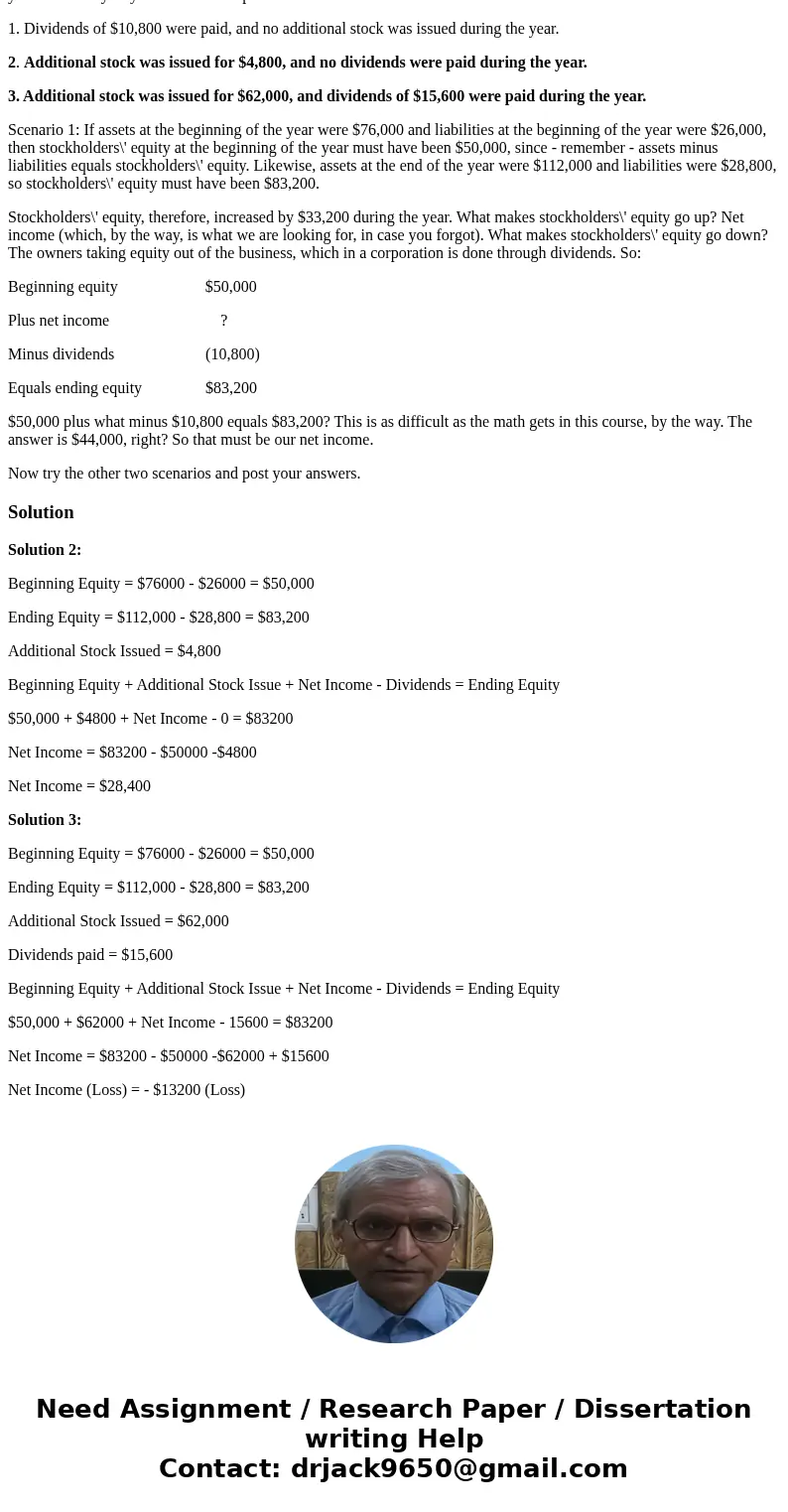The total assets and liabilities of Robot Company at January
The total assets and liabilities of Robot Company at January 1 and December 31, 2018, are presented below.
January 1 December 31
Assets $76,000 $112,000
Liabilities 26,000 28,800
Determine the amount of net income or loss for 2018, applying each of the following assumptions concerning the additional issuance of stock and dividends paid by the firm. Each case is independent of the others. I will go over scenario 1 below. Your discussion assignment for the week is to answer scenarios 2 and 3. You will need to post before you can see any of your classmates\' posts.
1. Dividends of $10,800 were paid, and no additional stock was issued during the year.
2. Additional stock was issued for $4,800, and no dividends were paid during the year.
3. Additional stock was issued for $62,000, and dividends of $15,600 were paid during the year.
Scenario 1: If assets at the beginning of the year were $76,000 and liabilities at the beginning of the year were $26,000, then stockholders\' equity at the beginning of the year must have been $50,000, since - remember - assets minus liabilities equals stockholders\' equity. Likewise, assets at the end of the year were $112,000 and liabilities were $28,800, so stockholders\' equity must have been $83,200.
Stockholders\' equity, therefore, increased by $33,200 during the year. What makes stockholders\' equity go up? Net income (which, by the way, is what we are looking for, in case you forgot). What makes stockholders\' equity go down? The owners taking equity out of the business, which in a corporation is done through dividends. So:
Beginning equity $50,000
Plus net income ?
Minus dividends (10,800)
Equals ending equity $83,200
$50,000 plus what minus $10,800 equals $83,200? This is as difficult as the math gets in this course, by the way. The answer is $44,000, right? So that must be our net income.
Now try the other two scenarios and post your answers.
Solution
Solution 2:
Beginning Equity = $76000 - $26000 = $50,000
Ending Equity = $112,000 - $28,800 = $83,200
Additional Stock Issued = $4,800
Beginning Equity + Additional Stock Issue + Net Income - Dividends = Ending Equity
$50,000 + $4800 + Net Income - 0 = $83200
Net Income = $83200 - $50000 -$4800
Net Income = $28,400
Solution 3:
Beginning Equity = $76000 - $26000 = $50,000
Ending Equity = $112,000 - $28,800 = $83,200
Additional Stock Issued = $62,000
Dividends paid = $15,600
Beginning Equity + Additional Stock Issue + Net Income - Dividends = Ending Equity
$50,000 + $62000 + Net Income - 15600 = $83200
Net Income = $83200 - $50000 -$62000 + $15600
Net Income (Loss) = - $13200 (Loss)


 Homework Sourse
Homework Sourse